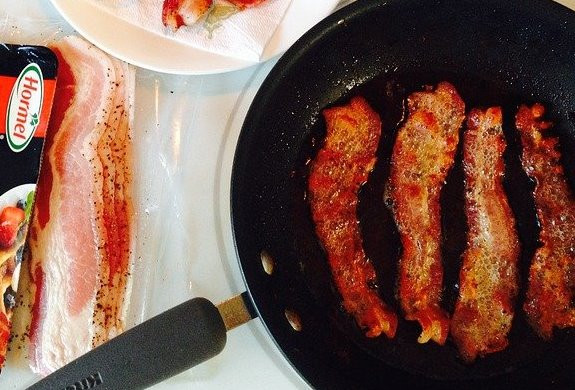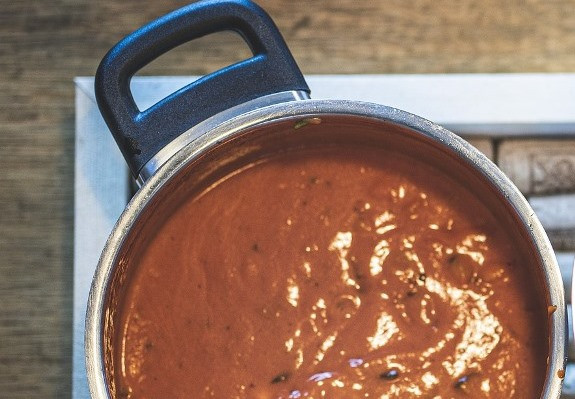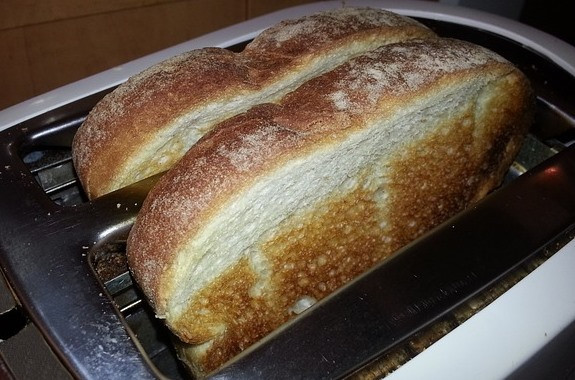Heat transfer
Heat transfer is the way food is cooked. Heat energy is moved from one place to another this happens in three different ways: Conduction, Convection and Radiation.
Conduction
Conduction is the transfer of heat energy through the vibration of particles.
In a solid mass, the particles are held tightly together, when a particle vibrates it bumps into other particles and quickly passes the vibrations on.
When you place a pan on a hob the heat energy from the hob causes particles in the pan to begin to vibrate, the vibrations cause the particles to gain heat energy.
When the vibrating particles collide with other nearby particles, they pass some of their extra heat energy onto them.
This process will continue in a pan until the heat has passed all the way through.
When food is added to the hot pan the heat energy in the particles of the pan is transferred to particles in the food until the food is cooked all the way through.

Metals are very good conductors of heat, hence most pans are made of metal. Energy from the cooker is quickly transferred to the pan and its contents.
Convection
Convection is the transfer of heat energy through liquids or gasses (including the air).
When you heat a liquid, the liquid nearest the heat source will heat up first.
The warmer liquid will then rise above the colder liquid, the colder liquid will then take the warmer liquids place nearer the heat source.
As the process continues you get a circulation of liquid known as convection current. After a while this circulation of heat will result in all the liquid being heated.
In an oven convection also occurs, hot air will rise and cooler air falls in the same way.

Radiation
In the same way that heat from the sun heats up the earth, radiation is the transfer of heat energy through radiation waves.
Radiation does not require direct contact between the heat source and the food (unlike conduction and convection).
Grills in cookers and toasters use radiation to cook food. They emit waves of radiation, when these waves reach the food they are absorbed and heat up the food.

Microwave cooking uses radiation to heat up the water molecules, fats and sugars in our foods.
The video below explains the heat transfer process.
